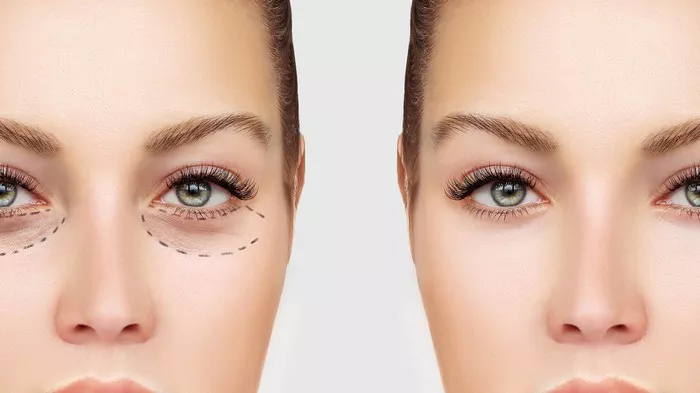Dark circles under the eyes are a common cosmetic concern for many people. While they can be caused by a variety of factors, including lack of sleep, allergies, and aging, some people are genetically predisposed to dark circles. In this article, we will explore whether it is possible to get rid of genetic dark circles, and what treatments are available to help reduce their appearance.
What Causes Genetic Dark Circles?
Genetic dark circles are caused by a combination of factors, including:
Thin Skin: People with genetic dark circles often have thinner skin under their eyes, which can make blood vessels more visible.
Pigmentation: Some people are genetically predisposed to hyperpigmentation, which can cause dark circles under the eyes.
Bone Structure: The shape of the bones in the face can also contribute to the appearance of dark circles under the eyes.
Can You Get Rid of Genetic Dark Circles?
While it may not be possible to completely get rid of genetic dark circles, there are several treatments that can help to reduce their appearance, including:
Topical Treatments: There are several topical treatments that can help to reduce the appearance of dark circles under the eyes, including vitamin C, retinol, and hydroquinone. These ingredients can help to brighten the skin and reduce hyperpigmentation.
Chemical Peels: Chemical peels can help to improve the texture and tone of the skin under the eyes, reducing the appearance of dark circles.
Dermal Fillers: Dermal fillers can be used to add volume to the under-eye area, reducing the appearance of dark circles.
Laser Resurfacing: Laser resurfacing can help to tighten and firm the skin under the eyes, reducing the appearance of dark circles.
Blepharoplasty: Blepharoplasty, also known as eyelid surgery, can be used to remove excess skin and fat from the under-eye area, reducing the appearance of dark circles.
Microneedling: Microneedling involves using a device with tiny needles to create micro-injuries in the skin, which can stimulate collagen production and improve the texture of the skin under the eyes.
Platelet-Rich Plasma (PRP) Therapy: PRP therapy involves using a patient’s own blood, which is processed to concentrate the platelets, to stimulate collagen production and improve the texture of the skin under the eyes.
Eye Creams: Eye creams that contain caffeine, vitamin K, and niacinamide can help to reduce the appearance of dark circles by improving circulation and reducing inflammation.
Tips for Preventing Genetic Dark Circles
While it may not be possible to completely prevent genetic dark circles, there are several tips that can help to reduce their appearance, including:
Get Enough Sleep: Lack of sleep can contribute to the development of dark circles under the eyes. Aim for 7-8 hours of sleep per night.
Stay Hydrated: Dehydration can cause the skin under the eyes to appear dull and tired. Drink plenty of water throughout the day to stay hydrated.
Wear Sunscreen: Sun damage can cause the skin under the eyes to appear dull and tired. Wear sunscreen with an SPF of at least 30 to protect your skin from the sun’s harmful rays.
Use Gentle Skincare Products: Harsh skincare products can irritate the delicate skin under the eyes and contribute to the development of dark circles. Use gentle skincare products that are specifically formulated for the under-eye area.
Manage Allergies: Allergies can cause inflammation and swelling in the under-eye area, which can contribute to the development of dark circles. Manage your allergies with medication or other treatments to reduce their impact on your skin.
Quit Smoking: Smoking can cause the blood vessels under the eyes to dilate, making dark circles more visible. Quitting smoking can help to reduce the appearance of dark circles.
Reduce Alcohol Consumption: Alcohol can cause dehydration and inflammation, which can contribute to the development of dark circles. Reduce your alcohol consumption to help reduce their appearance.
Manage Stress: Stress can cause the skin under the eyes to appear dull and tired. Manage your stress levels with relaxation techniques such as meditation or yoga to help reduce the appearance of dark circles.
Conclusion
In conclusion, genetic dark circles can be a cosmetic concern for many people. While it may not be possible to completely get rid of them, there are several treatments that can help to reduce their appearance, including topical treatments, chemical peels, dermal fillers, laser resurfacing, blepharoplasty, microneedling, PRP therapy, and eye creams. As with any cosmetic concern, it is important to discuss your options with a qualified cosmetic surgeon or dermatologist to determine the best course of treatment for your individual needs. Additionally, following tips for preventing genetic dark circles, such as getting enough sleep, staying hydrated, wearing sunscreen, using gentle skincare products, managing allergies, quitting smoking, reducing alcohol consumption, and managing stress, can help to reduce their appearance and improve the overall health and appearance of your skin.

